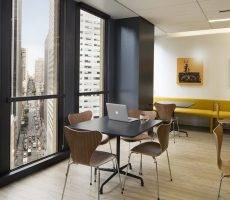September 28, 2016
Apple agrees to lease half million sq. ft. office at Battersea Power Station 0
 Apple has confirmed the rumours that began in the Spring of this year by announcing that it is to relocate its UK headquarters from its current base in the West End along with several other sites to the redeveloped Battersea Power Station. The site’s developers say that Apple will become the largest office tenant at the £9 billion Battersea Power Station mixed use development occupying approximately 500,000 sq. ft. across 6 floors of the central Boiler House inside the iconic building. Apple is expected to move into the Power Station in 2021 at which time the office will account for circa 40 percent of the total office space in the whole development. 1400 Apple employees from existing offices around London will relocate to one of London’s best known landmarks. Apple has added, that this is a great opportunity to have its entire team working and collaborating in one location while supporting the renovation of a neighbourhood rich with history.
Apple has confirmed the rumours that began in the Spring of this year by announcing that it is to relocate its UK headquarters from its current base in the West End along with several other sites to the redeveloped Battersea Power Station. The site’s developers say that Apple will become the largest office tenant at the £9 billion Battersea Power Station mixed use development occupying approximately 500,000 sq. ft. across 6 floors of the central Boiler House inside the iconic building. Apple is expected to move into the Power Station in 2021 at which time the office will account for circa 40 percent of the total office space in the whole development. 1400 Apple employees from existing offices around London will relocate to one of London’s best known landmarks. Apple has added, that this is a great opportunity to have its entire team working and collaborating in one location while supporting the renovation of a neighbourhood rich with history.












 A new report from Allied Market Research claims that the worldwide market for Building Information Modelling will grow by over a fifth to hit $11.7 billion by 2022, driven primarily by legislation demanding that all construction work should apply BIM. The
A new report from Allied Market Research claims that the worldwide market for Building Information Modelling will grow by over a fifth to hit $11.7 billion by 2022, driven primarily by legislation demanding that all construction work should apply BIM. The 


 Businesses are ready to embrace the new era of robot workers, automation and artificial intelligence, according to a new report.
Businesses are ready to embrace the new era of robot workers, automation and artificial intelligence, according to a new report. 
 UK growth had already eased from around 3 percent in 2014 to around 2 percent before the EU referendum due primarily to slower global growth, but the Brexit vote to leave the EU is likely to lead to a significant further slowdown. UK GDP growth is forecast to decelerate to around 1.6 percent in 2016 and 0.6 percent in 2017 according to
UK growth had already eased from around 3 percent in 2014 to around 2 percent before the EU referendum due primarily to slower global growth, but the Brexit vote to leave the EU is likely to lead to a significant further slowdown. UK GDP growth is forecast to decelerate to around 1.6 percent in 2016 and 0.6 percent in 2017 according to 
 Global law firm Osborne Clarke has released its fourth
Global law firm Osborne Clarke has released its fourth 
 In a new report
In a new report 
 A coalition of twenty major European telecommunications firms has come together to drive the rapid creation of a continent wide 5G network and warn national Governments and the EU of the dangers of over-regulation. The seven page document entitled the
A coalition of twenty major European telecommunications firms has come together to drive the rapid creation of a continent wide 5G network and warn national Governments and the EU of the dangers of over-regulation. The seven page document entitled the 










August 2, 2016
Seven workplace stories we like and think you should read this week 0
by Mark Eltringham • Architecture, Comment, News, Property, Workplace, Workplace design